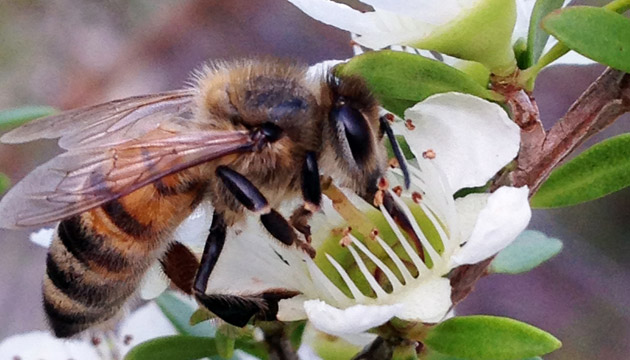Manuka honey is being touted as a panacea for a range of medical conditions.
Story Amanda Burdon Photo Carmel Maloney
Alistair Maloney and his family used to travel widely each year chasing the honey flow. From the far North Coast of New South Wales, they’d move their hives up into the Richmond Ranges in spring and summer to work the box and ironbark and other eucalypts. Not once did they consider stationing their bees on the jellybush (Leptospermum) in their own backyard at Broadwater, where the low bushes grow naturally in the sandy soils of the coastal heath.
It’s a different story today. Now the Maloneys’ entire beekeeping schedule and the health of their 700 hives is tailored to capitalise on the flowering of the jellybush (commonly known as tea-tree). They have established several small Leptospermum plantations of their own, and the dark, viscous honey their bees produce from it – known as Manuka – is the cornerstone of their business.
And for good reason. Manuka honey contains a chemical called methylglyoxal (MGO) that accelerates wound recovery and combats antibiotic-resistant superbugs such as Staphylococcus aureus (see ‘The magic of Manuka’), and commands prices often five times that of regular honey. Some hospitals are now using Manuka dressings to treat acute wounds, and one company is also heralding its power to treat chronic eye disease.
Global demand for Manuka honey – for consumption, medicinal, pharmaceutical and cosmetic uses – easily outstrips current supply from New Zealand and Australia. Beekeepers once considered it a scourge; now some laud it as their saviour.
“It’s been a real blessing for us,” says 75-year-old Alistair, who has been an apiarist for 50 years. “It’s been an enormous challenge learning how to work the Leptospermum, but we are now beginning to see the rewards. Demand is growing and there are national and overseas buyers offering very good prices for our honey. To produce normal honey is wonderful, because it’s a great product. Manuka is a step above – a medicinal product that is proven to help people. That’s very fulfilling.”
This story excerpt is from Issue #114
Outback Magazine: August/September 2017










